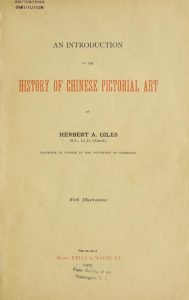Chinese art
The Road to Recovery for a Chinese Sutra
In preparation for a Chinese Object Study Workshop hosted by the National Museum of Asian Art (NMAA) in late August, I selected a sutra in the Freer and Sackler Library to illustrate the evolution in printing of Chinese books. The rolled sutra is Baoqieyin Dharani sutra (宝箧印陀罗尼经) and was printed in 975 CE, likely making it the oldest printed item in our library collections.
Researching Chinese Literati Painting in the Freer Sackler Library
The summer of 2020, as part of a Smithsonian Libraries’ Wikidata Pilot Project and in response to the Covid-19 pandemic, the Freer Gallery of Art and Arthur M. Sackler Gallery Library offered an all-virtual internship project.
Freer’s Marginalia and Mandarin Ducks
Chinese Minority Women Headdresses
Chinese folk papercuts are usually treated as anonymous art, differentiated only by local styles. More recently some scholars have argued that it is necessary to study the artists who make the papercuts to really understand regional styles and the subject matter. Additionally, many of the things portrayed in papercuts are traditional objects no longer commonly used today but remembered through paper art. The study of these papercuts may be able to tell us something about local minority art and culture in China.
Jin Xiu Wen Zhang
Embroidery is an important art in China with examples found from as early as the Zhou Dynasty (1027–221 B.C.). One of the most well-known pieces of Chinese embroidery is a 10th century A.D. textile piece discovered in the Mogao Grottoes at Dunhuang. There are also fine pieces from the Song dynasty. Traditional embroidery is still practiced in many areas of China. The Chinese government has designated four schools of Chinese embroidery as Chinese Intangible Cultural Heritage.

